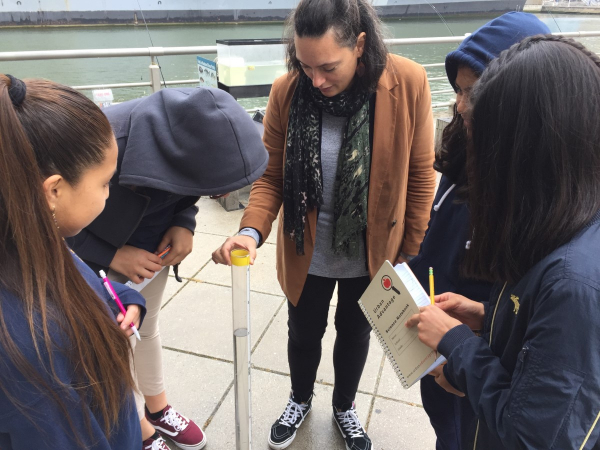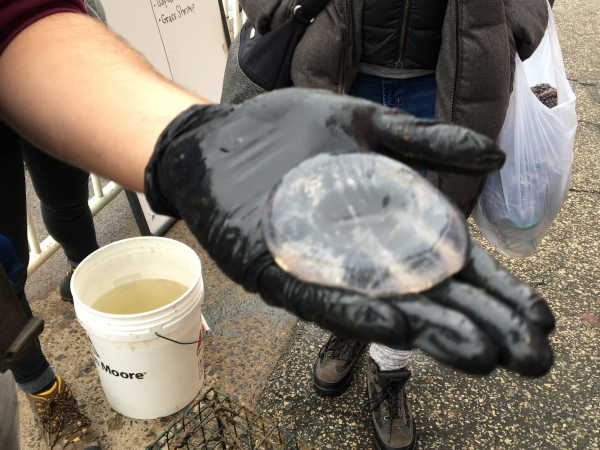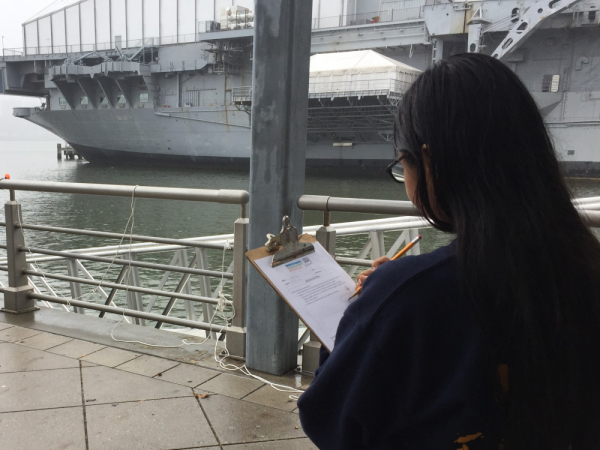Did you know that the Hudson River Estuary extends more than 150 miles, from NYC all the way up to Troy, NY? Hudson River Park’s 400 acre Estuarine Sanctuary is a precious part of this natural resource. HRPK’S Estuary Lab works with our community year-round to study and protect our sanctuary waters, and Tuesday, October 22, we joined groups up and down the Estuary in celebrating a “Day in the Life of the Hudson and Harbor.”
During this annual event organized by the NYS Department of Environmental Conservation (DEC) and the Lamont-Doherty Earth Observatory of Columbia University, thousands of students from NYC to Troy collected data about the Hudson River using scientific tools, that will then be shared online, creating “snapshots” of the Hudson River at dozens of locations – considering factors like water quality and fish populations.

This year, Hudson River Park hosted 335 students from 8 different schools across sampling sites at 5 different HRPK piers. Students from 75 Morton Middle School, NYC Museum School, NYC Lab School, PS 340, Dual Language Middle School, High School for Environmental Studies and Mott Hall Charter School took part in an exciting day of hands-on data collection working alongside educators from our HRPK Estuary Lab and partners from The River Project, The Department of Environmental Conservation and the NYC Soil & Water Conservation District.
Using fishing poles, water-testing kits and other scientific tools, students investigated and reported on river conditions including water temperature, salinity, pH, turbidity (cloudiness) and dissolved oxygen. At the River Project’s Pier 40 Wetlab, students from the NYC Museum School also had the opportunity to meet live animals collected from fish traps in the River, including moon jellyfish and oyster toadfish. Data collected at sites like ours will help to create a bigger picture of the health of the Hudson River by reporting on aquatic life, water chemistry, tides and the weather at each site.

Educators also encouraged students to consider their surroundings and how human behavior affects the environment – an exercise that can be much more impactful when spending time in the field. As Aline Gjelaj, teacher from Dual Language Middle School, explained, “I can teach them in the classroom but when I bring them to [Hudson River] Park they get to be scientists and collect real data. As NYC kids, they get to connect with their environment and learn how to protect it.”

In addition to student-supported efforts, HRPK Estuary Lab scientists continuously monitor Park water conditions to understand the estuary ecosystem and communicate its health to Park users. If you’re interested in learning more about current river conditions, check out the Hudson River Environmental Conditions Observation System (HRECOS) network.